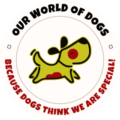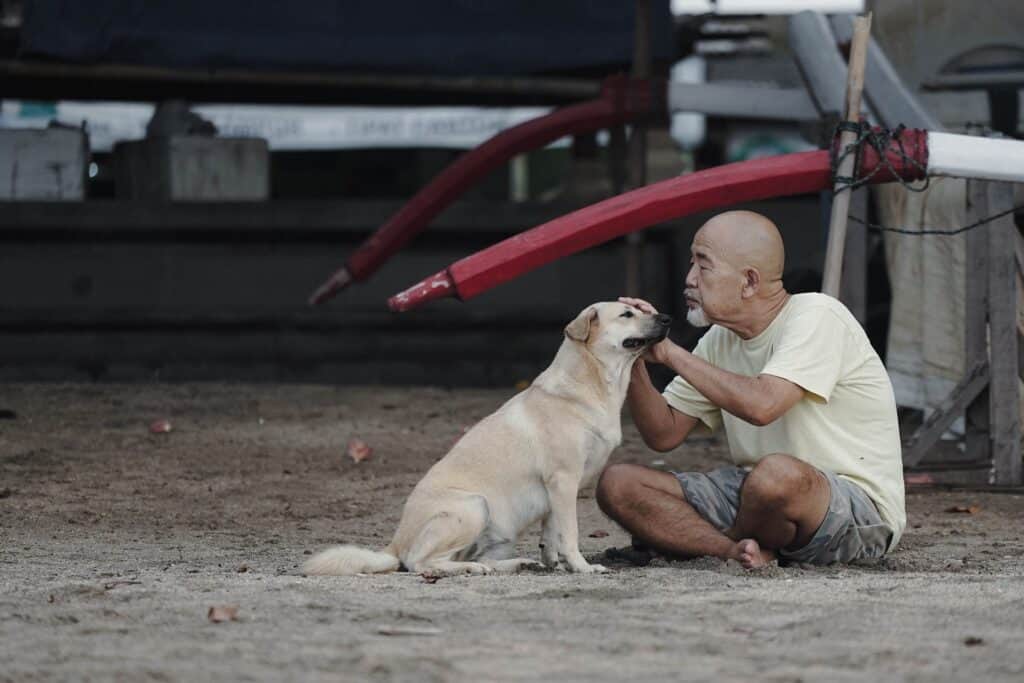
Introduction: The Enduring Symphony of Friendship – Humans and Dogs
“Until one has loved an animal, a part of one’s soul remains unawakened,” wrote the poet Anatole France. This sentiment captures the essence of the bond between humans and dogs – a relationship so deep and multifaceted that it touches the very core of our being. This article, “Man’s Best Friend: Heart and Soul of Canine Companions” aims to explore the rich tapestry of this relationship. From the ancient paths of dog domestication to the present-day roles dogs play in our society, we will delve into the historical, emotional, and societal aspects of our connection with these remarkable animals.
Our journey begins with a look at the historical bond between humans and dogs, tracing back to the days when the first wolves ventured close to human camps. We will explore the evolution of various dog breeds, each with its unique story and purpose, reflecting the diversity and adaptability of these animals.
Moving into their roles in society, we’ll see how dogs have gone beyond mere companionship, becoming indispensable partners in various aspects of human life – from providing assistance and protection to enhancing our mental and physical well-being. We will delve into the intricate language of canine communication, understanding how dogs express themselves and interact with us on a level that often goes beyond words.
The emotional journey of dog ownership is filled with stories of joy, adventure, and sometimes, the heartache of loss. We will share these narratives, celebrating the profound impact these animals have on our lives. As we peer into the future, we will discover how the bond between humans and dogs is likely to evolve, influenced by technological advancements and changing societal attitudes.
In essence, this article is a tribute to the timeless bond between humans and dogs – a bond that has shaped our history, enriched our lives, and promises to continue evolving in fascinating ways. Join us on this journey to celebrate and understand the deep, enduring connection we share with our canine companions.
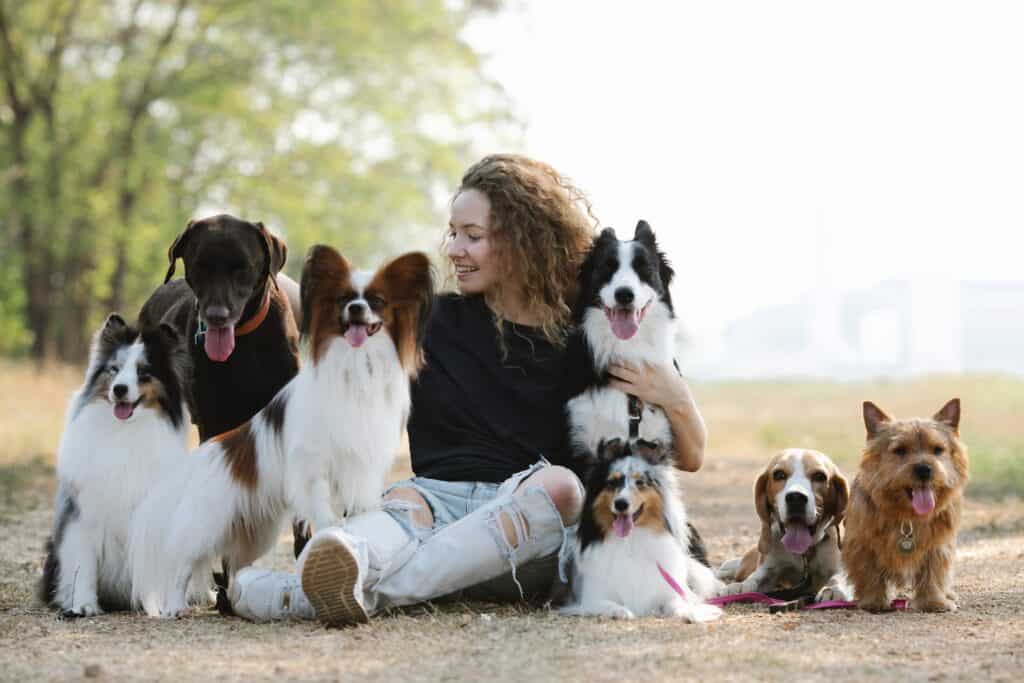
The Historical Bond With Man’s Best Friend: Tracing the Timeless Connection Between Humans and Dogs
Introduction
In the vast tapestry of human history, few relationships are as enduring and emotionally rich as that between humans and dogs. This bond, spanning thousands of years, is not just a tale of domestication but one of companionship, loyalty, and mutual survival. The story of how wolves evolved into the dogs that sleep at our feet is as complex as it is fascinating.
The Dawn of Domestication
- Origins: The journey begins over 30,000 years ago. Genetic studies suggest that dogs diverged from wolves at this time, likely due to a group of wolves that started interacting closely with ancient human hunter-gatherers.
- Early Evidence: The earliest concrete evidence of domesticated dogs comes from a 14,000-year-old grave in Germany, where a man was buried alongside his dog. This indicates not just domestication but also an emotional connection.
Co-Evolution: Shaping Each Other’s Destinies
- Survival Benefits: The relationship between humans and these early canines was symbiotic. Dogs helped humans in hunting, while humans provided food and shelter, creating a survival advantage for these early dogs.
- Evolutionary Impact: This mutual relationship influenced the physical and behavioral evolution of dogs. Over generations, dogs became more adept at understanding human gestures and emotions, evolving from their wolf ancestors into animals uniquely attuned to human behavior.
The Role of Dogs in Ancient Cultures
- Egypt: In Ancient Egypt, dogs were revered, often depicted in art and sometimes mummified and buried with their owners.
- Greece and Rome: In Greek and Roman cultures, dogs were seen as symbols of loyalty and guardianship. Stories like that of Argos, Odysseus’ faithful dog, exemplify this bond.
- Native American Cultures: Many Native American tribes respected dogs for their hunting abilities and their roles as protectors and companions.
The Middle Ages and Beyond
- Roles Expansion: During the Middle Ages in Europe, the role of dogs expanded. They were used in hunting, guarding, and even in warfare. Breeds began to diversify to fulfill specific roles.
- Symbolism: Dogs also held a symbolic place in literature and art, often representing fidelity and trustworthiness.
The Victorian Era: The Birth of Modern Dog Culture
- Breed Development: This period saw the development of many dog breeds we know today. Selective breeding for appearance and temperament became popular.
- Pets as Family Members: The Victorian era also marked a shift in how pets were viewed – from workers to companions, leading to a more intimate and affectionate bond with dogs.
The historical bond between humans and “man’s best friend” is a mirror to our own evolution as a society and as emotional beings. It reflects our journey from survival to companionship, highlighting an alliance that has shaped both species. As we look back on this rich history, it’s clear that dogs have not just been living alongside us; they have been an integral part of what it means to be human, influencing our culture, our emotions, and our very evolution.

A Tapestry of Breeds: The Diversity and Heritage of Man’s Best Friend
Introduction
From the majestic Great Dane to the tiny Chihuahua, the world of dogs is astonishingly diverse. This diversity is a testament to both nature’s creativity and human ingenuity. In this section, we delve into the fascinating world of dog breeds, exploring their unique traits, origins, and the stories that shaped them.
The Concept of Breeds
- Defining a Breed: A dog breed is a specific group of dogs, having distinct appearance and behavior, which is consistently reproduced over generations.
- The Role of Breeding: Selective breeding by humans has played a crucial role in the development of different breeds, with each breed often serving a specific purpose such as hunting, herding, or companionship.
The Ancestry of Breeds
- Ancient Breeds: Some dog breeds have ancient origins, like the Saluki, believed to date back to 329 B.C. in Egypt, or the Akita, a revered breed in Japan with a history going back hundreds of years.
- Development of Working Breeds: Many breeds were developed for specific tasks. For example, Border Collies were bred for herding, while Bloodhounds were used for tracking due to their extraordinary sense of smell.
Breed Diversity: A World Tour
- Europe’s Canine Legacy: Europe has given us a variety of breeds, from the sturdy and versatile German Shepherd to the gentle and noble Irish Wolfhound.
- Asia’s Unique Breeds: Asia’s contributions include the fiercely loyal Tibetan Mastiff and the intelligent and agile Shiba Inu.
- Americas’ Working and Companion Dogs: In the Americas, the industrious Labrador Retriever, initially a fisherman’s helper, and the tiny yet spirited Chihuahua reflect the continent’s diverse roles for dogs.
Stories Behind Breeds
- The St. Bernard’s Heroic Tale: Originating in the Swiss Alps, the St. Bernard is famed for its rescue work, saving countless lives in snowy passes.
- The Greyhound’s Speed and Grace: Once bred for hunting and coursing, the Greyhound is a symbol of speed, often associated with nobility and royalty.
The Cultural Impact of Breeds
- Symbolism and Status: Certain breeds have become symbols in different cultures. For instance, the Bulldog is often seen as a symbol of British tenacity.
- Pop Culture and Breeds: Dogs have also played a significant role in popular culture, with breeds like the Dalmatian gaining fame through literature and film.
The Future of Dog Breeds
- Conservation and Health Issues: The future of dog breeds also brings challenges, including the need for genetic diversity and addressing health issues due to overbreeding.
- Emerging Breeds and Trends: New breeds continue to emerge, and there is a growing emphasis on ethical breeding practices and the well-being of dogs.
The world of dog breeds is as varied as it is fascinating. Each breed carries its own story, a narrative woven through history, shaped by human needs, and adorned with cultural significance. Understanding these breeds gives us not only insight into the dogs themselves but also into our own history and the roles these faithful companions have played in it.

Dogs in Society: Beyond Companionship to Life-Changing Partners
Introduction
Dogs are not just pets; they are integral members of society, playing various roles that extend far beyond companionship. This section explores the myriad ways in which dogs contribute to human society, showcasing their remarkable versatility and the profound impact they have on our lives.
Service Dogs: Heroes in Disguise
- Guiding the Blind: Guide dogs provide independence and mobility to visually impaired individuals, exemplifying the extraordinary bond and trust between a human and a dog.
- Assistance for Disabilities: Dogs are trained to assist people with various disabilities, performing tasks like alerting a deaf person, pulling a wheelchair, or helping with mobility and balance.
Therapy Dogs: Healing with a Wagging Tail
- Emotional Support and Comfort: Therapy dogs are known for their calming effect, providing comfort in hospitals, schools, and nursing homes.
- Crisis and Trauma Relief: These dogs are also found helping people in stressful situations like disaster zones or courtrooms, offering emotional support during difficult times.
Working Dogs: Tireless Workers in Diverse Fields
- Law Enforcement and Military Roles: Dogs play critical roles in police and military operations, used for tasks like tracking, detection of explosives or narcotics, and search and rescue missions.
- Agricultural Helpers: In rural areas, breeds like Border Collies and Australian Shepherds are indispensable for herding livestock.
The Role of Dogs in Search and Rescue
- Natural Disasters and Accidents: Search and rescue dogs are trained to find and save people in the aftermath of earthquakes, avalanches, and other disasters.
- Specialized Training: These dogs undergo rigorous training to navigate challenging terrains and conditions, often risking their own lives to save others.
Therapy and Emotional Support Dogs: A Special Kind of Care
- Mental Health Support: Emotional support dogs provide therapeutic benefits to individuals with psychiatric disorders, helping to alleviate anxiety, depression, and PTSD.
- In Schools and Therapeutic Settings: These dogs are increasingly found in educational and therapeutic settings, aiding in stress reduction and emotional regulation for students and patients.
Conservation Efforts By Man’s Best Friend: Dogs in Environmental Protection
- Wildlife Conservation: Conservation dogs are trained to detect and protect endangered species and to combat poaching.
- Environmental Monitoring: These dogs also assist in detecting invasive species and monitoring changes in ecosystems.
The roles dogs play in society highlight their extraordinary adaptability and their deep-seated desire to work alongside humans. From providing essential services to offering emotional support, dogs enrich our lives in countless ways. As we continue to discover new roles for these incredible animals, we not only improve our society but also strengthen the bond we share with our canine companions.
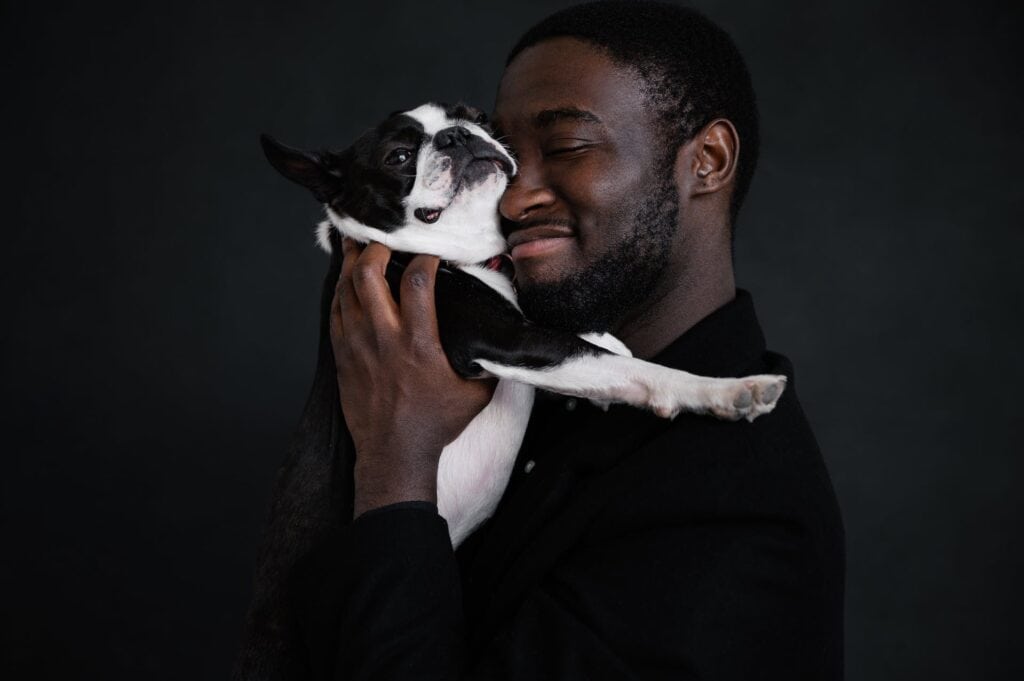
The Science of Companionship: Understanding the Impact of Dogs on Human Health and Well-being
Introduction
The bond between humans and dogs is more than emotional; it has significant health benefits, both psychological and physical. This section delves into the scientific understanding of how dogs positively impact human lives, backed by research and studies.
The Psychological Benefits of Dog Ownership
- Reducing Stress and Anxiety: Studies have shown that interacting with dogs can lower levels of cortisol, a stress hormone, and increase the production of endorphins, the body’s natural stress relievers.
- Combatting Loneliness and Depression: Dogs provide companionship that combats feelings of loneliness and isolation, particularly valuable for individuals living alone or those who are elderly.
- Enhancing Social Interaction: Dog owners often engage in more social activities, like walking their dog or visiting dog parks, which can lead to increased social interaction and community building.
Physical Health Benefits
- Encouraging Exercise and Outdoor Activity: Owning a dog often leads to a more active lifestyle. Regular walks and outdoor activities with dogs are linked to improved cardiovascular health and lower obesity rates.
- Health Monitoring and Alerting: Some dogs are trained to detect and alert owners to health issues such as seizures, drops in blood sugar for diabetics, or even certain cancers.
The Impact on Child Development
- Building Immunity and Reducing Allergies: Children raised in homes with dogs tend to have stronger immune systems and are less likely to develop certain allergies.
- Development of Empathy and Responsibility: Growing up with a dog can help children develop greater empathy, higher self-esteem, and a sense of responsibility.
Dogs and Mental Health Therapies
- Integrating Dogs in Therapeutic Practices: Dogs are increasingly being incorporated into therapeutic practices, assisting in treatments for a range of mental health issues, from autism spectrum disorders to PTSD.
- Animal-Assisted Therapy (AAT): This structured form of therapy involves interactions with dogs as a means to improve the psychological and emotional well-being of patients.
Studies and Research on Human-Dog Interactions
- Heart Health: Research indicates that dog owners have a lower risk of heart disease, attributed to regular physical activity and stress reduction.
- Longevity and Recovery: Dog owners often have a higher survival rate after a heart attack or stroke, and the presence of a dog can accelerate recovery and rehabilitation.
The Bi-Directional Nature of the Relationship
- Understanding the Mutual Benefits: The relationship between dogs and humans is not just beneficial for humans; it’s mutually advantageous. The attention and care provided by humans are essential for the dog’s well-being.
- Dogs’ Emotional Intelligence: Dogs have evolved to be highly attuned to human emotions and behaviors, creating a deep and reciprocal bond.
The intersection of dogs and human health is an area rich with positive findings. As science continues to uncover the depth of this relationship, it becomes increasingly clear that dogs contribute significantly to our physical, mental, and emotional well-being. Their presence in our lives is not just a source of joy and companionship but a profound contributor to our overall health.
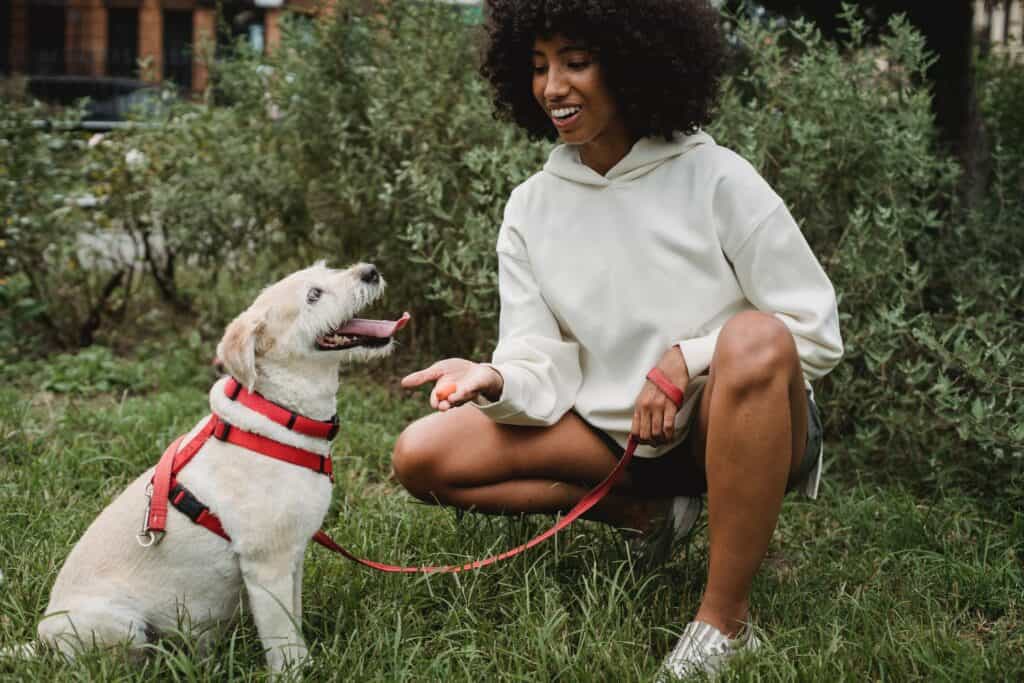
The Language of Bark and Tail: Unraveling the Communication Skills of Dogs
Introduction
Dogs communicate in ways that are often misunderstood or overlooked by humans. This section explores the fascinating world of canine communication, shedding light on how dogs express themselves and how they understand us, revealing a complex language of barks, body language, and behavior.
Understanding Canine Vocalizations
- Barks and Their Meanings: Dogs bark for various reasons – alerting to danger, expressing excitement, seeking attention, or signaling distress. Each bark can vary in pitch, duration, and frequency, conveying different messages.
- Other Vocalizations: Beyond barking, dogs also whine, growl, howl, and make other sounds, each serving a specific communicative purpose.
Body Language: A Key to Canine Emotions
- Tail Wagging: Often misconstrued as a simple sign of happiness, tail wagging can express a range of emotions, from excitement and contentment to fear and aggression, depending on the wag’s nature and context.
- Posture and Movement: A dog’s posture, including its stance, ear position, and eye contact, provides crucial cues about its emotional state and intentions.
Scent and Sensory Communication
- Scent Marking: Dogs have a highly developed sense of smell and use it for communication, leaving scents to mark territory or convey information about their identity and status.
- Sensory Understanding: Dogs are adept at reading human pheromones and can often sense changes in their owner’s emotional or physical state through scent.
The Role of Touch in Canine Communication
- Physical Contact: Touch is a powerful tool in dog communication. Gentle petting can calm a nervous dog, while rough handling may provoke anxiety or aggression.
- Understanding Boundaries: It’s crucial for humans to recognize and respect a dog’s boundaries in physical contact, as forcing interaction can lead to miscommunication and stress.
How Dogs Understand Human Communication
- Reading Human Cues: Dogs have an impressive ability to read and respond to human body language, vocal tone, and facial expressions.
- Learning and Responding to Commands: Through training, dogs learn to associate specific human words and gestures with actions or behaviors.
Training and Behavior: Enhancing Communication
- Effective Training Techniques: Positive reinforcement and consistent training methods strengthen communication between dogs and their owners, fostering mutual understanding and respect.
- Behavioral Issues: Understanding canine communication is key in addressing behavioral problems, as many such issues arise from misunderstandings or miscommunications between dogs and humans.
The language of dogs is complex and nuanced, involving a combination of vocalizations, body language, scent, and touch. By learning to interpret and respect these communication methods, we can deepen our bond with our canine companions, leading to a more harmonious and fulfilling relationship. Understanding the way dogs communicate is not just about training them; it’s about learning to speak their language, fostering a deeper connection and mutual understanding.
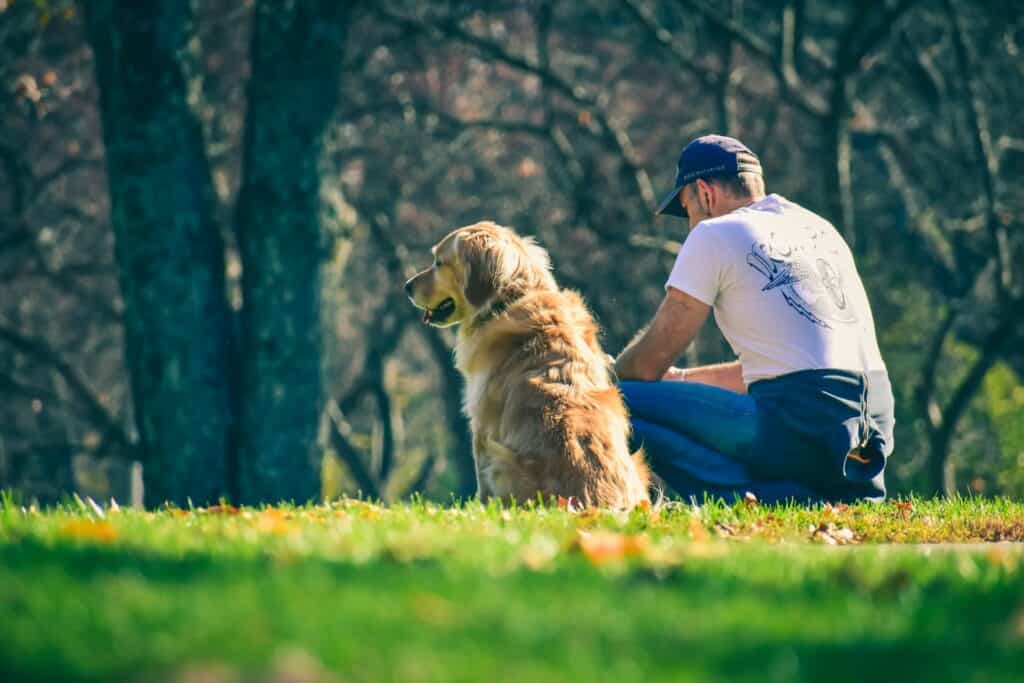
When They Leave Paw Prints on Our Hearts: Coping with the Loss of a Beloved Dog
Introduction
The loss of a man’s best friend is an emotional and often profound experience for many pet owners. Dogs are not just pets; they are family members, loyal companions, and sources of unconditional love. This section addresses the impact of losing a dog, offering insights into the grieving process and ways to cope with this heartrending experience.
Understanding the Grieving Process
- Acknowledging Grief: Recognize that grief over the loss of a dog is valid and natural. The bond between a person and their dog can be as significant as any human relationship.
- Stages of Grief: Grief can manifest in various stages, including denial, anger, bargaining, depression, and acceptance. It’s important to understand that these stages are not linear and may vary from person to person.
The Unique Bond Between Humans and Dogs
- The Depth of Connection: Explore the unique aspects of the human-dog relationship that make the loss so profound, such as unconditional love, companionship, and the role of a dog as a confidant and source of comfort.
- Psychological Impact: Discuss how dogs often serve as emotional anchors in our lives, providing stability, routine, and a sense of purpose.
Coping Mechanisms and Support
- Seeking Support: Encourage seeking support from friends, family, or pet bereavement groups. Sharing memories and feelings with others who understand can be therapeutic.
- Memorializing the Dog: Suggest ways to honor the memory of the dog, such as creating a photo album, planting a tree, or holding a small memorial service.
Dealing with Feelings of Guilt and Regret
- Understanding Common Emotions: Address common feelings of guilt or regret that may arise, especially if the loss involved difficult decisions like euthanasia.
- Self-Compassion: Emphasize the importance of being kind to oneself, recognizing that decisions were made out of love and care for the dog’s well-being.
Helping Children Understand Pet Loss
- Talking to Children: Provide guidance on how to talk to children about the loss of a pet, addressing their questions and emotions honestly and with sensitivity.
- Encouraging Expression: Encourage children to express their feelings through drawing, writing, or other creative outlets.
When to Consider a New Pet
- Timing is Personal: Emphasize that the decision to get a new dog is a personal one and that there is no ‘right’ time. It’s important to mourn the lost pet and ensure that the decision to adopt again is made for the right reasons.
- Honoring the Previous Dog: Remind readers that getting a new pet is not about replacing the lost one but about opening their hearts to another companion.
The loss of a dog is a deeply personal and life-changing event. It’s a journey of love, loss, and eventually, healing. While the pain of loss can be overwhelming, it’s a testament to the deep and meaningful impact that dogs have on our lives. In remembering and honoring these faithful companions, we keep their memories alive and cherish the indelible paw prints they’ve left on our hearts.
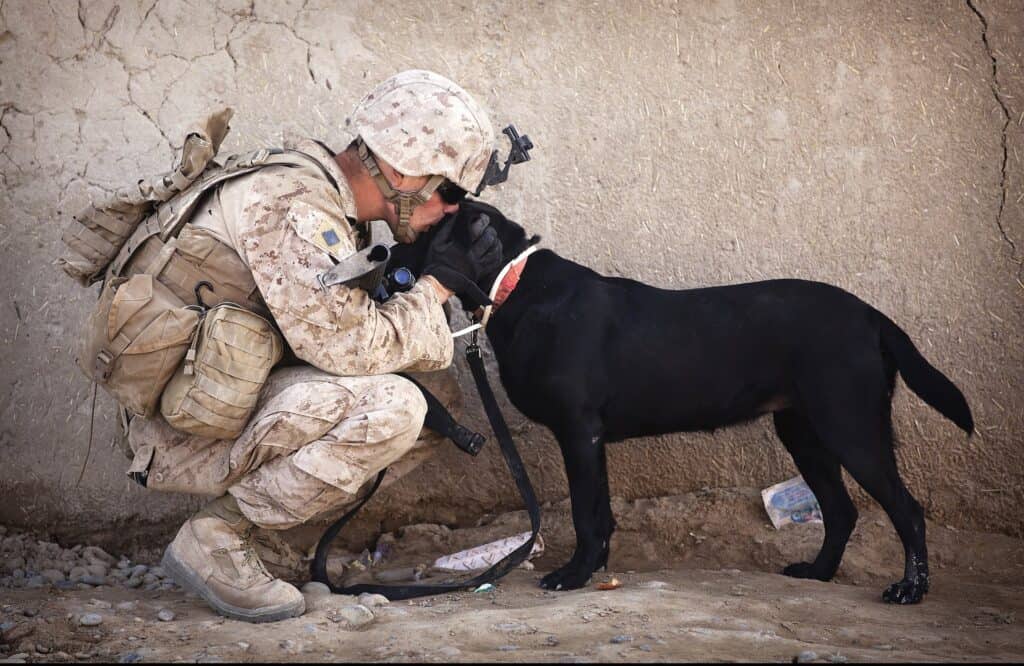
Furry Tales – Stories from Dog Owners: Celebrating the Bonds and Adventures of Man’s Best Friend
Introduction
In the heart of every dog owner, there’s a story waiting to be told. These stories, woven with threads of love, challenge, and companionship, celebrate the unique bond between humans and their canine friends. From tales of rescue and recovery to adventures in the great outdoors, each narrative underscores the remarkable impact these loyal companions have on our lives. These stories tell us why dogs are truly man’s best friend.
The Rescue Dog Who Rescued Back
A Story of Hope and Mutual Salvation
Meet Emily, a young woman grappling with loss and depression. Seeking companionship, she adopted Max, a timid rescue dog with a troubled past. In the months that followed, as Emily nurtured Max back to health, she found her own spirits lifting. Max’s resilience and unconditional love became Emily’s anchor, helping her find joy and purpose again. Their story is a poignant reminder of the healing power of love and the mutual rescue that often happens in the bond between a human and a rescue dog.
The Adventure Companion
Exploring the World Together
Tom and his Labrador Retriever, Buddy, are inseparable adventurers. Whether scaling mountains or navigating forests, Buddy’s enthusiasm and courage make him the perfect companion. Their escapades are not just about exploring the wilderness but about the deep connection they share, the unspoken understanding, and the sheer joy of experiencing the world together. Their story inspires us to find adventure in our lives, with our canine companions by our side.
The Unlikely Friendship
A Tale of Cross-Species Bonding
In a small village, there lived a Golden Retriever named Daisy, who formed an extraordinary friendship with a stray kitten, Mittens. This unusual bond captivated the village, symbolizing hope and harmony. Daisy’s protective and nurturing nature provided Mittens with a sense of family, while Mittens brought playfulness into Daisy’s life. Their story is a testament to the accepting and loving nature of dogs, capable of forming profound connections beyond their own kind.
Overcoming Challenges Together
A Journey of Perseverance
Sarah and her German Shepherd, Rex, faced a daunting challenge. Sarah, recovering from an accident, struggled with mobility, while Rex grappled with anxiety. Together, they embarked on a journey of healing and training. Each step of progress was a triumph, a testament to their determination and the strength of their bond. Their story is about overcoming adversity, not alone, but together, with loyalty and love as their guiding forces.
The Hero Dog
Acts of Heroism in Everyday Life
In a quiet suburb, a family dog named Bruno, a humble mixed breed, became an unexpected hero. One night, sensing danger, Bruno alerted his family to a fire in their home, saving their lives. His act of bravery went beyond instinct; it was a demonstration of his profound loyalty and protective spirit. Bruno’s story reminds us of the courage that dogs possess, often hidden beneath their playful and loving exterior.
These stories are just a glimpse into the world of dog ownership, a world filled with unconditional love, shared adventures, and life-changing moments. Every dog owner has their unique tale, a narrative enriched by the presence of a loyal canine companion. In sharing these stories, we celebrate not just the dogs themselves, but the extraordinary ways they touch our lives, leaving paw prints on our hearts that last a lifetime.
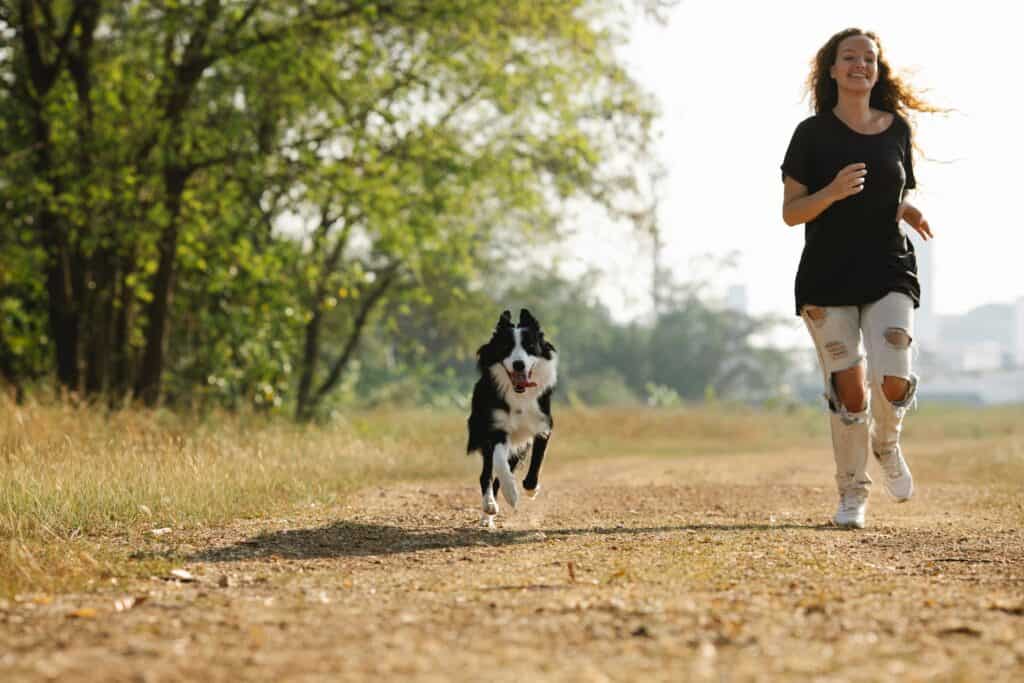
The Future of Canines and Humans: Evolving Relationships and Emerging Trends
Introduction
As we look to the future, the relationship between humans and dogs continues to evolve, shaped by advancements in technology, changes in societal values, and a deeper understanding of canine behavior and welfare. This section explores the potential future of this enduring bond and the emerging trends that will define our interaction with our canine companions in the years to come.
Technological Advancements in Dog Care
- Smart Pet Technologies: The rise of smart pet technologies, including GPS trackers, fitness monitors, and interactive toys, is changing how we care for and interact with our dogs. These devices offer new ways to ensure their safety, monitor their health, and enhance their mental stimulation.
- Telemedicine for Pets: Veterinary telemedicine is becoming more prevalent, providing convenient access to professional advice and care, especially in remote or underserved areas.
The Evolution of Dog Training
- Positive Reinforcement Methods: There is a growing emphasis on positive reinforcement and science-based training methods, moving away from punitive techniques. This approach fosters a more humane and effective way to communicate and build relationships with dogs.
- Virtual Training Platforms: Online training resources and virtual consultations are becoming more popular, offering flexibility and accessibility to expert guidance.
Changes in Societal Attitudes
- Increasing Recognition of Dogs’ Rights: There is a growing movement towards recognizing dogs not just as property, but as sentient beings with rights. This shift is leading to changes in laws and regulations regarding animal welfare and protection.
- More Pet-Friendly Spaces: Cities and communities are becoming more pet-friendly, with an increase in dog parks, dog-friendly cafes, and workplaces that allow dogs, reflecting a greater acceptance of dogs in public life.
Advances in Canine Health and Genetics
- Genetic Research: Advances in genetic research are improving our understanding of canine health, leading to better disease prevention and tailored treatment options.
- Longevity and Quality of Life: With a focus on preventive care and nutrition, we’re likely to see an increase in the lifespan and quality of life of dogs.
The Role of Dogs in Environmental and Wildlife Conservation
- Conservation K9s: Dogs are being increasingly used in wildlife conservation efforts, aiding in tracking endangered species and detecting illegal wildlife trafficking.
- Environmental Monitoring: Canine abilities are also being harnessed for environmental monitoring, such as detecting pollutants or invasive species in ecosystems.
The Impact of Climate Change on Dogs
- Adapting to Climate Challenges: As the climate changes, there will be a need to adapt canine care and management to new environmental conditions, including dealing with increased risks of heatstroke and the spread of diseases.
The Future of Dog Ownership
- Responsible Breeding and Adoption: There is a growing awareness of the importance of responsible breeding practices and the adoption of rescue dogs. Ethical considerations in dog breeding, focusing on health and temperament over appearance, are likely to become more prominent.
- Community and Online Support Networks: The rise of online communities and support networks for dog owners provides a platform for sharing knowledge and experiences, fostering a global community of dog lovers.
The future of the human-dog relationship is one of continued innovation, deeper understanding, and growing respect. As we navigate these changes, our commitment to the welfare and happiness of our canine companions remains steadfast. Embracing these evolving trends will not only enhance the lives of dogs but also enrich our own, ensuring that this ancient bond continues to thrive in the modern world.
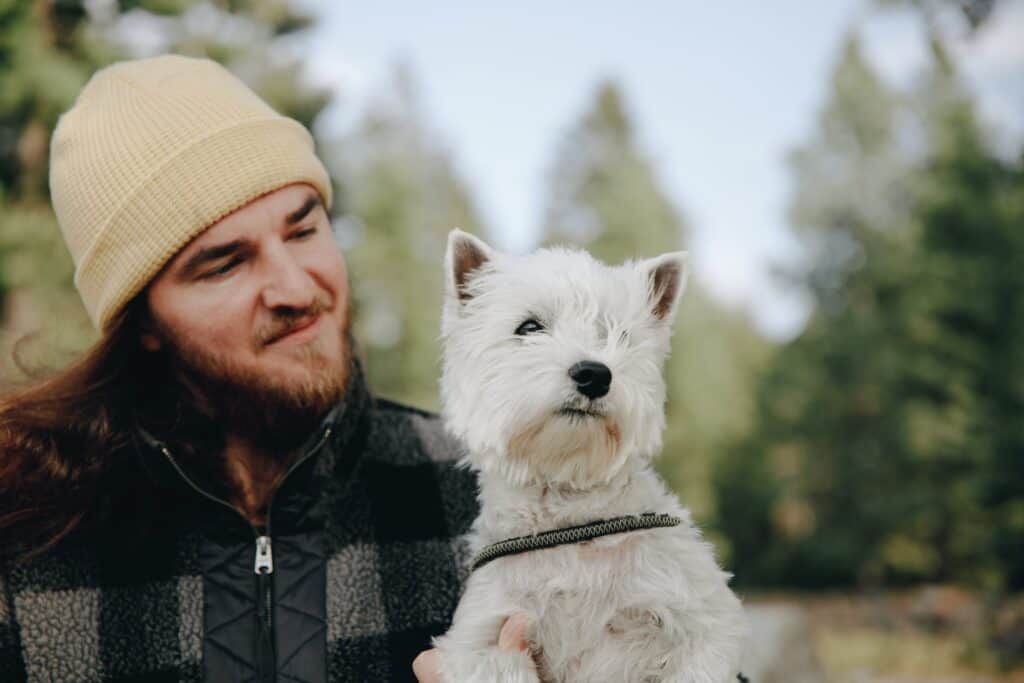
Conclusion: Celebrating the Timeless Bond Between Humans and Man’s Best Friend
As we bring our journey through the diverse and profound world of dogs to a close, it’s clear that the bond between humans and dogs is as rich and multifaceted as it is ancient. From the early days of domestication to the complex roles dogs play in modern society, each thread of our shared story reveals the depth and complexity of this unique relationship. There’s good reason why dogs have earned the unique title of being man’s best friend.
Through the historical lens, we saw how dogs evolved from wild wolves to become our most loyal companions, shaping and being shaped by human civilization. The diversity of breeds, each with its own unique story, underscores the creativity and ingenuity of both nature and humans. In society, dogs serve not just as pets, but as life-changing partners, offering support, protection, and unconditional love.
The impact of dogs on human health and well-being is profound and backed by science. They not only offer companionship but also bring tangible physical and mental health benefits. Communication with our canine companions, a complex language of barks, body language, and behavior, is a testament to the deep mutual understanding and connection we share.
The emotional aspect of this bond is perhaps the most powerful. The stories of dog owners, filled with love, challenge, and companionship, reflect the deep emotional impact these animals have on our lives. And when we face the heartache of losing these beloved companions, we are reminded of the depth of the bond we share.
Looking to the future, the relationship between humans and dogs is set to evolve further, influenced by technological advancements, changes in societal attitudes, and a deeper understanding of canine needs and welfare. This enduring bond, which has stood the test of time, will continue to adapt, grow, and thrive.
In conclusion, the world of dogs is a mirror to our own – reflecting our history, our diversity, our challenges, and our aspirations. As we continue to share our lives with these remarkable animals, we celebrate not just the joy and companionship they bring, but also the profound and enduring bond that connects us across time and cultures. Dogs, in every sense, are not just part of our world; they help to make it a better, more compassionate, and more joyful place.
